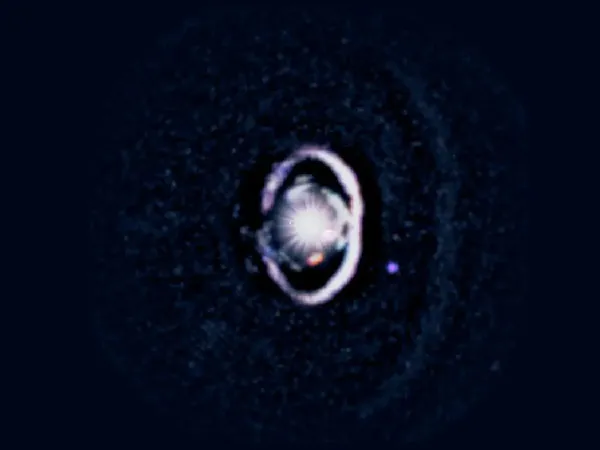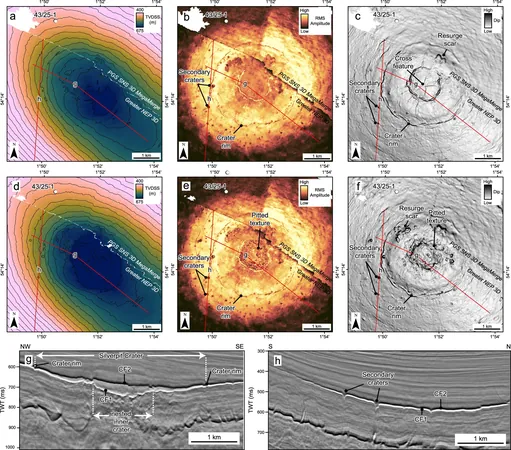
Astronomers Capture Rare Footage of a Newborn Planet in Formation!
2025-09-22
Author: Jacob
A Groundbreaking Discovery in the Cosmos!
For the very first time, scientists have successfully observed the birth of a planet right before our eyes! An international team, spearheaded by researchers from the University of Galway, has unveiled the mysterious WISPIT 2b—a young gas giant forming around the star WISPIT 2, located a staggering 430 light-years away in the constellation Aquila. Previously, the existence of gaps in protoplanetary disks had only been a theory suggesting planet formation, but now, WISPIT 2b stands as a tangible proof of this cosmic process.
Unlocking the Secrets of Planet Formation!
This remarkable discovery was made possible thanks to the advanced MagAO-X adaptive optics system attached to the 6.5-meter Magellan Telescope in Chile. This cutting-edge instrument captures the faint hydrogen-alpha light emitted as the young planet feeds on surrounding hydrogen gas, resulting in a striking red glow. Lead researcher Laird Close from the University of Arizona enthusiastically shared, "Once we activated the adaptive optics system, the planet jumped right out at us!" In an exciting twist, the team also identified a second planet candidate, CC1, orbiting closer to the star and potentially boasting a mass nine times greater than Jupiter!
Revolutionizing Our Understanding of Planetary Systems!
WISPIT 2b orbits its star from about 56 astronomical units (AU) away, which is approximately 3.5 billion miles—placing it further out than Neptune in our own solar system. In contrast, CC1 is located around 14 to 15 AU from WISPIT 2. Graduate student Gabriel Weible likened this groundbreaking find to capturing 'baby pictures' of Jupiter and Saturn, though these young planets are about ten times heavier than our familiar gas giants.
The ephemeral glow of these nascent planets makes such observations highly rare, necessitating impeccable timing and state-of-the-art instrumentation. This unprecedented glimpse into early planetary development opens up a wealth of opportunities to study how solar systems—including our very own—take shape.
A Milestone for Astronomy!
The stunning capture of WISPIT 2b marks a significant milestone in the field of astronomy, providing a direct window into the mysterious process of planet formation. As adaptive optics and imaging technologies continue to advance, astronomers are hopeful for more discoveries like this, further enriching our understanding of the cosmos and the origins of planetary systems.









 Brasil (PT)
Brasil (PT)
 Canada (EN)
Canada (EN)
 Chile (ES)
Chile (ES)
 Česko (CS)
Česko (CS)
 대한민국 (KO)
대한민국 (KO)
 España (ES)
España (ES)
 France (FR)
France (FR)
 Hong Kong (EN)
Hong Kong (EN)
 Italia (IT)
Italia (IT)
 日本 (JA)
日本 (JA)
 Magyarország (HU)
Magyarország (HU)
 Norge (NO)
Norge (NO)
 Polska (PL)
Polska (PL)
 Schweiz (DE)
Schweiz (DE)
 Singapore (EN)
Singapore (EN)
 Sverige (SV)
Sverige (SV)
 Suomi (FI)
Suomi (FI)
 Türkiye (TR)
Türkiye (TR)
 الإمارات العربية المتحدة (AR)
الإمارات العربية المتحدة (AR)